- Introduction: A Teacher’s Role in Shaping a Learning Strategy
- Methods: Comparison
- Language Learning Strategies (LLSs)
- Identifying and Analysing Learning Strategies
- Advantages and Disadvantages of Different Methods
- Role of a Teacher in Shaping Learning Strategies
- Intended Results: A Combined Approach
- Conclusion
- References
Introduction: A Teacher’s Role in Shaping a Learning Strategy
- Teacher’s role in learning: supportive and instructional;
- Dörnyei (2009) explains that there is a recent tendency in encouraging students to define their learning strategy;
- Dörnyei, Muir and Ibrahim (2014) posit that the proposed solution is to combining motivational and instructional approaches;
- Paige, Cohen and Shively (2004) state that eliciting information: observations and tests.
Assisting learners in understanding the language has always been the central focus of the language learning process. According to Dӧrnyei (2009), because of the need to encourage an intuitive understanding of a second language, a teacher often focuses on teaching students specific learner strategies that will enable them to acquire new skills and gain language-related knowledge. Furthermore, Dörnyei et al. (2014) explain that it is typically considered important for a teacher to determine the current strategy used by a learner to locate its weaknesses and strength, suggesting improvements. Therefore, according to Paige et al. (2004), eliciting information about learning strategies usually takes one of the priorities that a teacher pursues when promoting language skills acquisition. Although there is the assumption that teachers should focus on teaching rather than exploring learning strategies, understanding the needs of students and adjusting the learning process to them is also crucial.

Methods: Comparison
- Dörnyei (2009): qualitative analysis (phenomenology);
- Dörnyei et al. (2014): qualitative analysis (phenomenology);
- Paige et al. (2004): qualitative analysis (case study);
- Critical questions: how can the role of a teacher in building a learning strategy be examined?
Each of the studies addresses a qualitative issue in the analysis of a learning process. Therefore, the application of the qualitative research method was used in each study. The specified solution seems the most reasonable one since it contributes to a profound exploration of the issue. However, the described technique may lack objectivity, due to the focus on student-specific experiences. Therefore, the studies in question are similar in their theme and research tools, yet they focus on different aspects of developing a learning strategy. The role of a teacher and the independence of a learner are particularly interesting aspects of the studies in question.
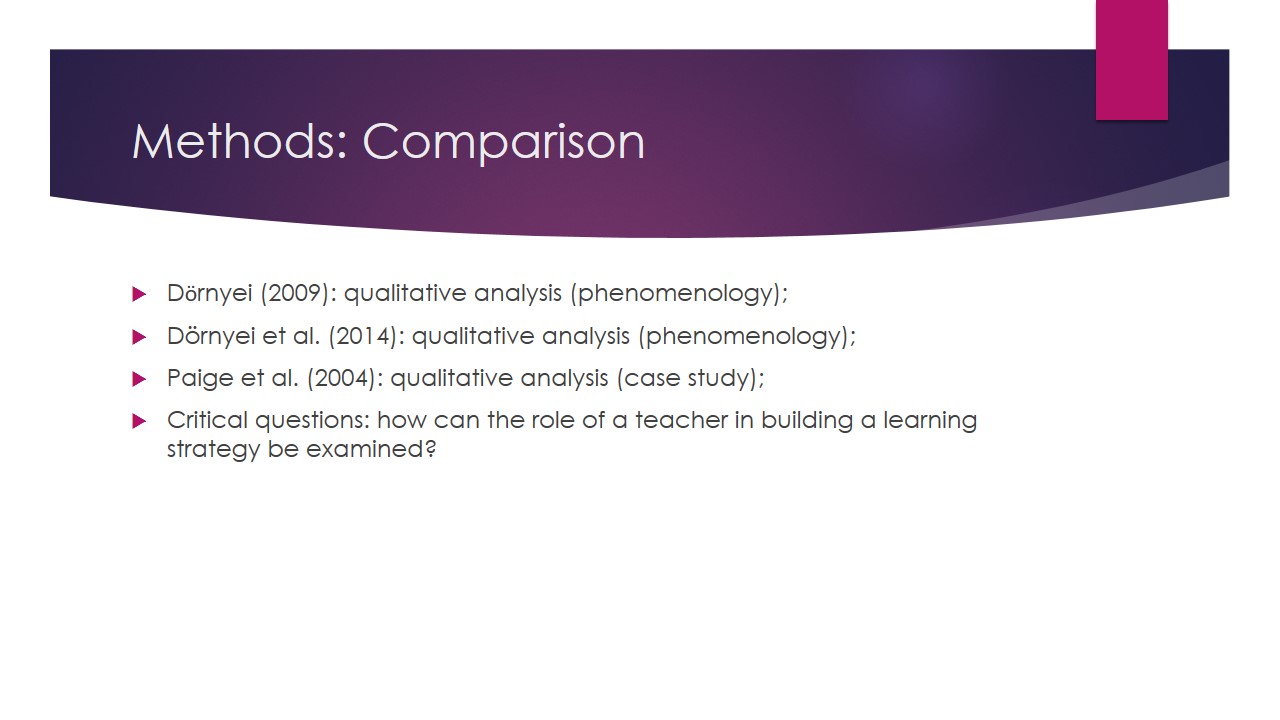
Language Learning Strategies (LLSs)
- Language learning strategies (LLSs): depend on students’ characteristics and goals;
- Autonomous as the focus on learners’ independence;
- Motivational as the tool for building inspiration;
- Instructional as following an educator’s guidelines (Tseng, Dörnyei, & Schmitt, 2006).
As a rule, several language learning strategies (LLSs) are typically identified. These include the self-regulated approach, or autonomous language learning, motivational strategies and instruction-based strategies (Oxford, 1990). The described types of LLSs can be interpreted as umbrella terms for a wider set of approaches that allow exploring students’ potential and encouraging them to build motivation for language learning.
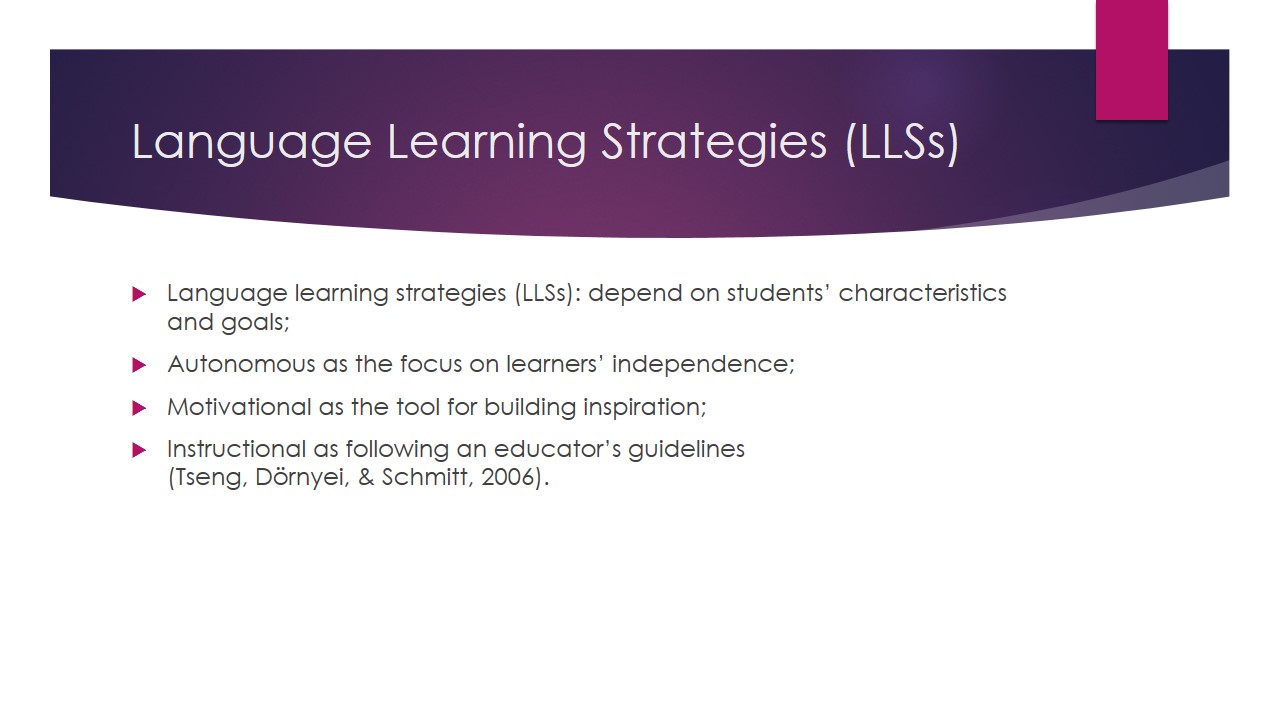
Identifying and Analysing Learning Strategies
- Approaches for identifying learner strategies: observation and testing;
- Foundational differences: agency of a learner;
- Instruction-based approach: low learner agency;
- Autonomy-based approach: high learner agency;
- Motivation-based approach: medium learner agency (Dӧrnyei, 2009).
Traditionally, a teacher can elicit information about a learners’ strategy either with observations or by performing a test. While motivational learning encourages the agency of a learner and motivates students to gain independence in their learning process, task-based instructions implies that every stage of language skills acquisition should remain under the constant supervision of a teacher (Paige et al., 2004). Therefore, the key advantage of the methods based on informed analysis includes the opportunity for inspiring students to become independent and acquire self-directed learning skills. Observations, in turn, provide a chance to analyse learning strategies in action and design a proper learning process (Dӧrnyei, 2009). The disadvantages are respectively the lack of direction (observations) and the absence of learners’ agency (testing and analysis) (Dörnyei et al., 2014).
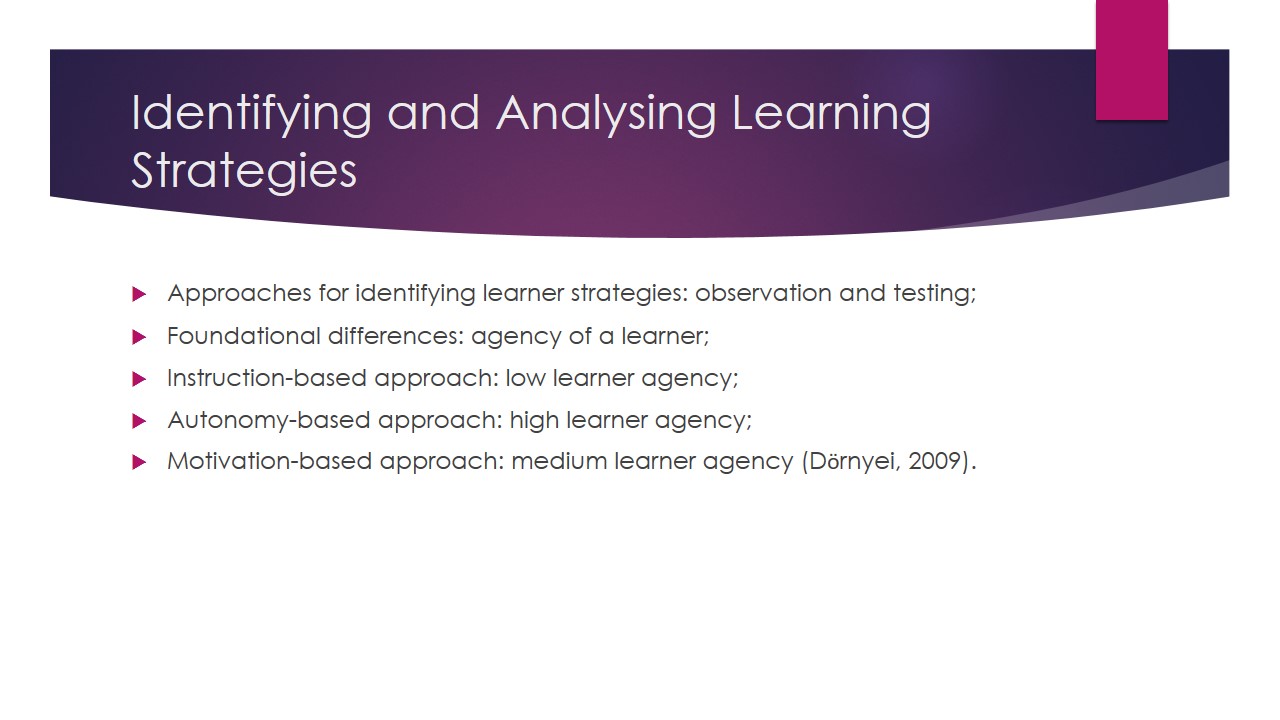
Advantages and Disadvantages of Different Methods
- Motivational approach: weakness: students lack of knowledge of learning theories;
- Motivational approach: strength: students are enthusiastic and empowered to study;
- Instructional approach: weakness: teachers lack of knowledge about learners’ unique characteristics;
- Instructional approach: strength: students receive clear guidelines and achieve set objectives (Dörnyei et al., 2014);
- A teacher’s role: supporting students’ independence in developing learning strategies (Paige et al., 2004).
Because of the lack of experience and knowledge concerning the learning process, a student needs a teacher as a part of the support system for building a learning strategy. Put differently, in the process of a student defining their learning strategy, a teacher should support a learner and create the environment in which a learning strategy can develop and gain potential. Therefore, rejecting the teacher as the person that may help a student in shaping their learning approach and improving it would be a mistake. However, a teacher should not foist a learning framework onto a student in case the latter feels uncomfortable using it. Instead, a combined approach involving both promotion of autonomy and careful direction are required.
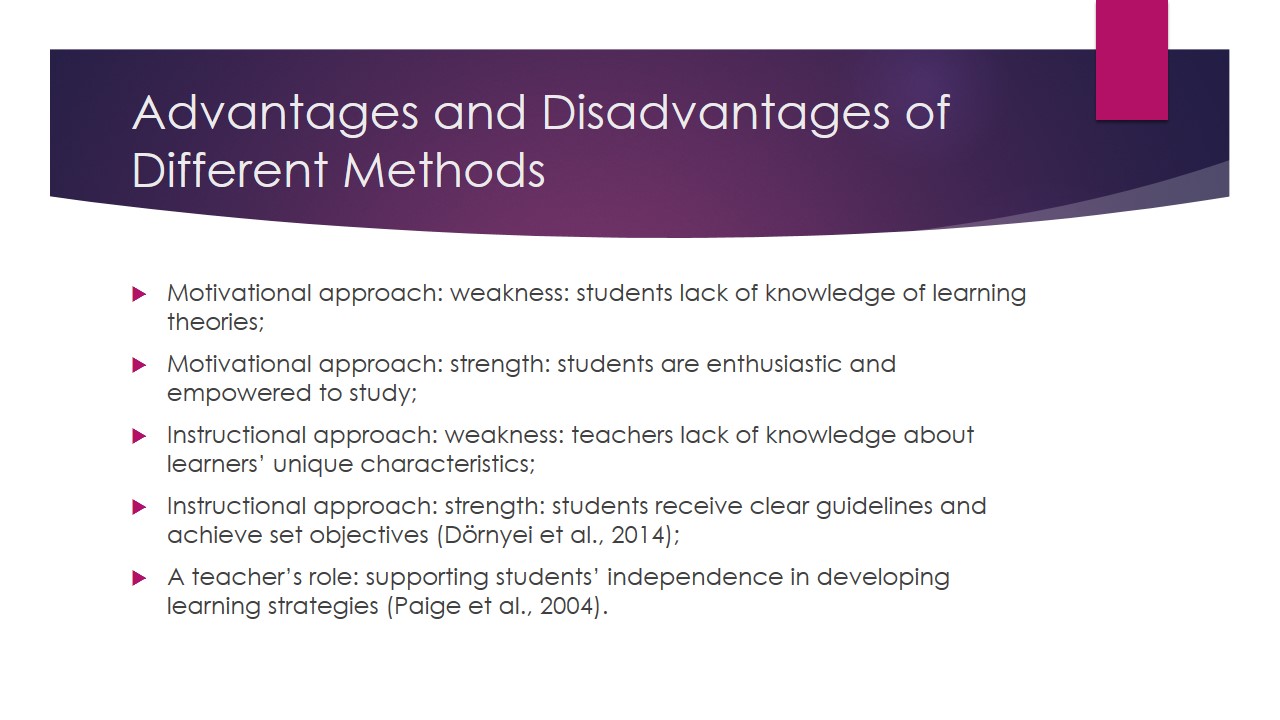
Role of a Teacher in Shaping Learning Strategies
- Role of a teacher: providing support for a student;
- Assisting a student in selecting an appropriate learning approach;
- Encouraging self-directed learning and independence;
- Aspiring a student to develop the qualities required for self-directed learning (Graham, 2004).
Since the idea of learners’ independence and agency in the process of developing second language skills has been the focal point of the recent language learning theories, the role of a teacher in the development of LLSs has been brought into question (Graham, 2004). On the one hand, a detailed study of LLSs enables a teacher to enhance the learning process by assisting a student in selecting the most suitable one. On the other hand, with the rise in learners’ autonomy, it would be reasonable to leave the choice of a learning strategy to a student, while a teacher could focus on enhancing motivation rates among learners and selecting the resources that could facilitate further learning (O’Malley & Chamot, 1990).
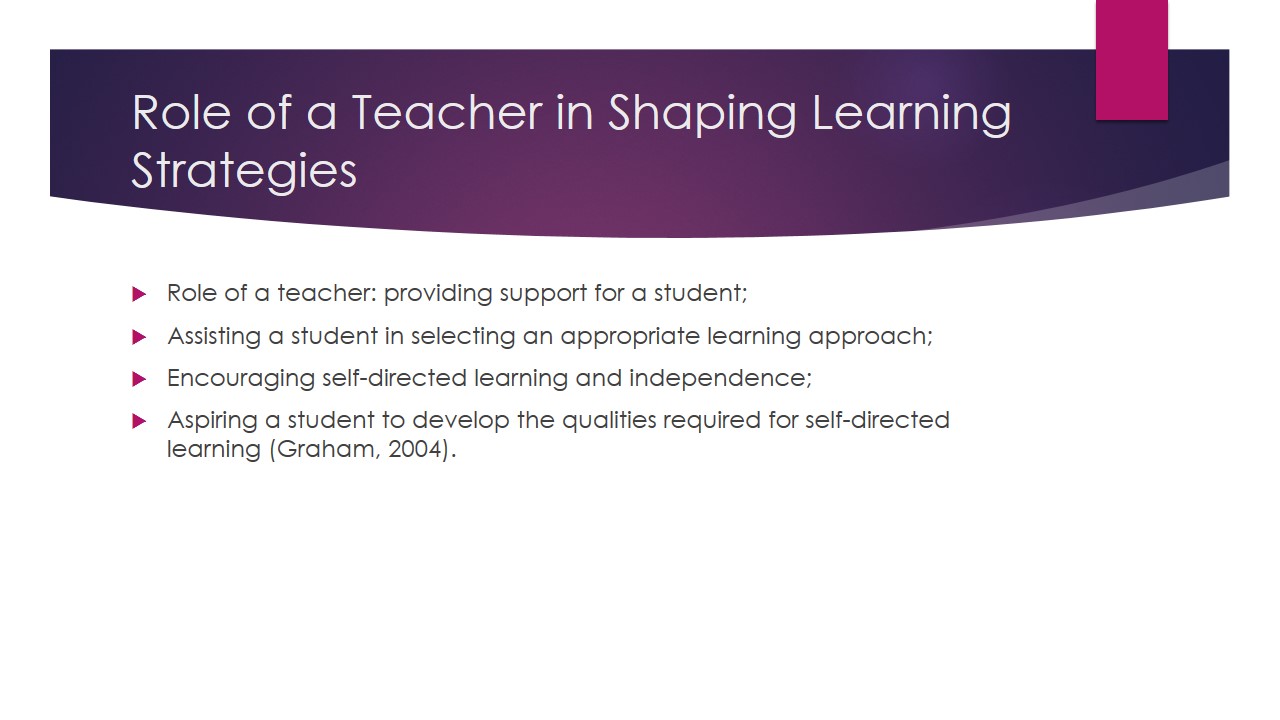
Intended Results: A Combined Approach
- Expected outcomes of a combined approach: increase in students’ efficiency;
- High probability of a rise in motivation rates;
- Rise in the quality of teaching due to the flexibility that a teacher receives (Graham, 2004).
The proposed solution is likely to affect both a student and a teacher positively. While a learner will be provided with the required amounts of support and independence, a teacher will have the time and power to focus on the development of lessons, the search for the needed material and the assessment of a student’s progress. At the same time, the proposed approach will allow a teacher to shape the curriculum in the way that fits the needs of students best based on their learning strategies (Graham, 2004). Therefore, instead of relegating the role of a teacher solely to the provision of learning material, one should consider viewing an educator as a part of a support system for a learner.
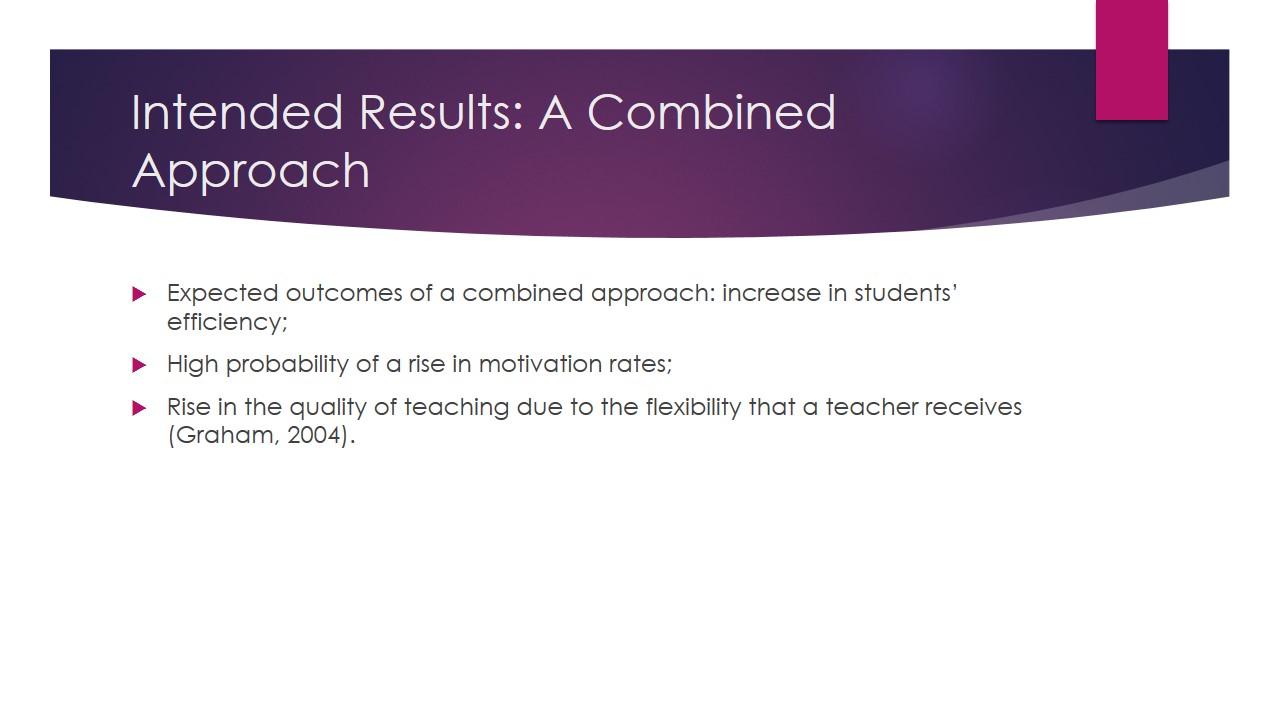
Conclusion
- Defining a learning strategy: a crucial step in a student’s progress;
- A teacher’s role: support, provision of learning materials and consultations;
- Advantage: opportunity for meeting student-specific needs;
- Results: rise in learners’ agency and performance.
The process of developing a learning strategy is critical for a student and it should include the assistance of a teacher in order to facilitate successful learning. Although an educator should not define a student’s learning approach, the participation of a teacher is desirable for designing a coherent learning framework. In addition, by studying the learning strategy that their students adopt, teachers can shape the education process to meet student-specific needs depending on the cultural characteristic of their learners. Therefore, active participation of teachers in the process of shaping a learning strategy should be encouraged.
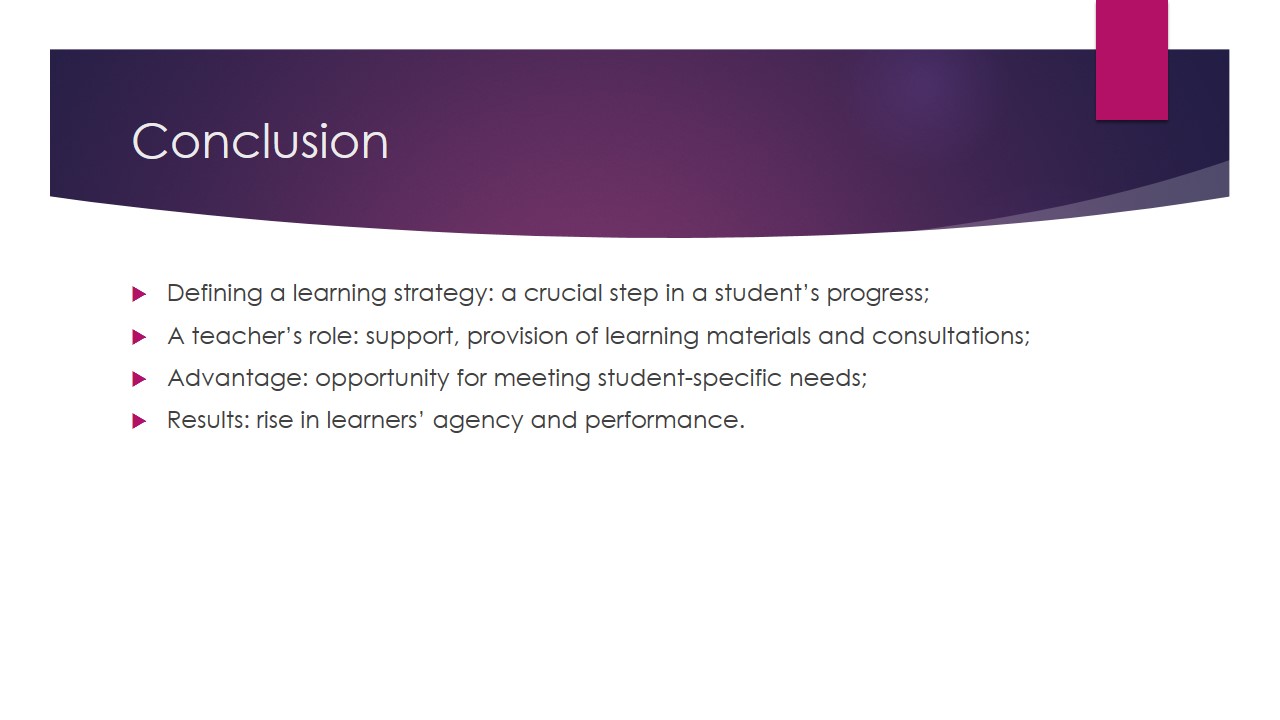
References
Dörnyei, Z. (2009). The L2 motivational self system. In Z. Dӧrnyei & E. Ushioda (Eds.), Motivation, language identity and the L2 self (pp. 9-42). Bristol, UK: Multilingual Matters.
Dörnyei, Z., Muir, C., & Ibrahim, Z. (2014). Directed motivational currents: Energising language learning through creating intense motivational pathways. In D. Lasagabaster, A. Doiz, & J. M. Sierra (Eds.), Motivation and foreign language learning: From theory to practice (pp. 9-29). Amsterdam, Netherlands: John Benjamins.
Graham, S. (2004). Giving up on modern foreign languages? Students’ perceptions of learning French. Modern Language Journal, 88, 171-191.
O’Malley, J. M. & Chamot, A. U. (1990). Learning strategies in Second Language Acquisition. Cambridge, UK: Cambridge University Press.
Oxford, R. L. (1990). Language learning strategies. What every teacher should know. Boston, MA: Heinle.
Paige, R., Cohen, A. D., & Shively, R. L. (2004). Assessing the impact of a strategies-based curriculum on language and culture learning abroad. Frontiers: The Interdisciplinary Journal of Study Abroad, 10, 253-276.
Tseng, W. T., Dörnyei, Z., & Schmitt, N. (2006). A new approach to assessing strategic learning: The case of self-regulation in vocabulary acquisition. Applied Linguistics, 27, 78-102.